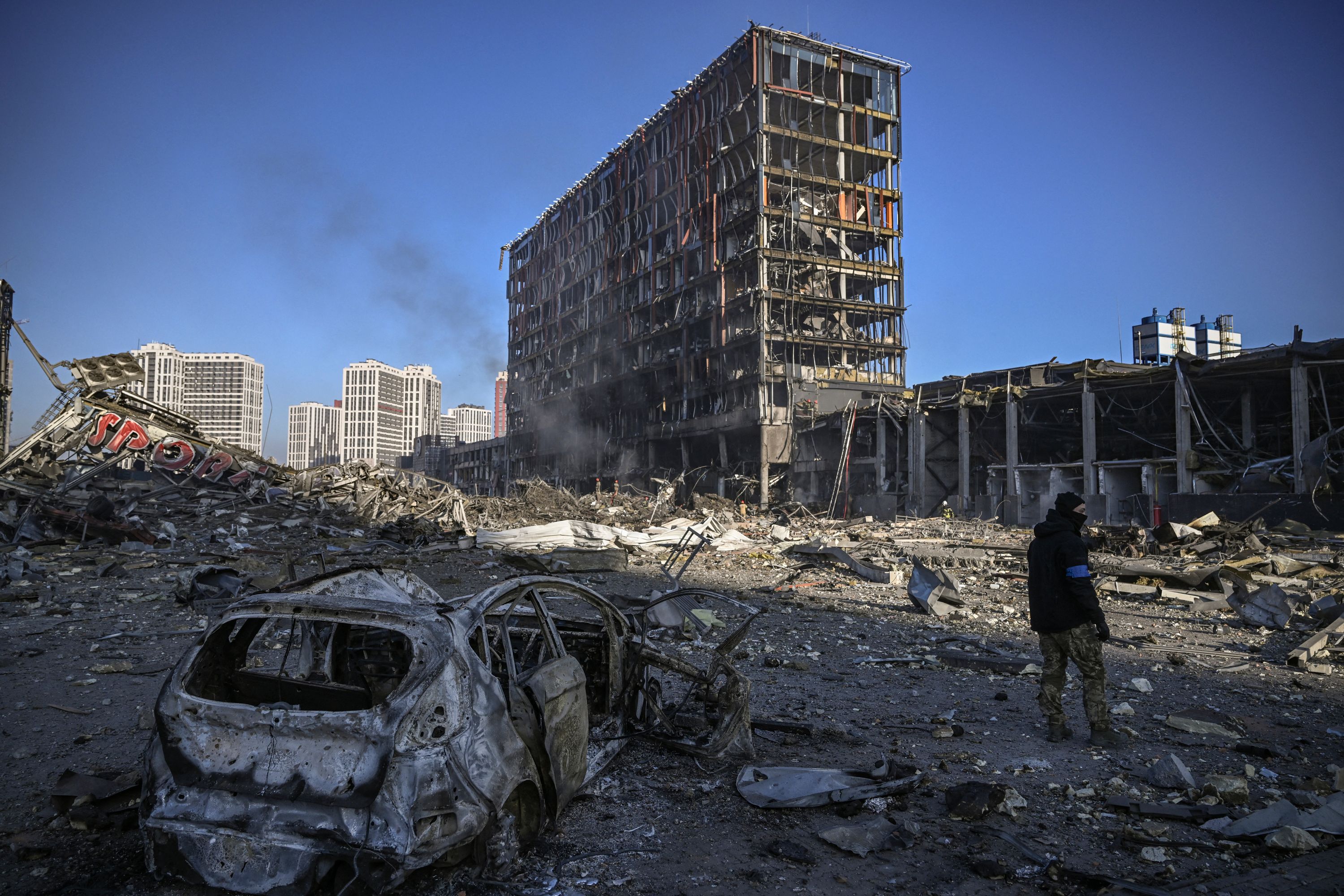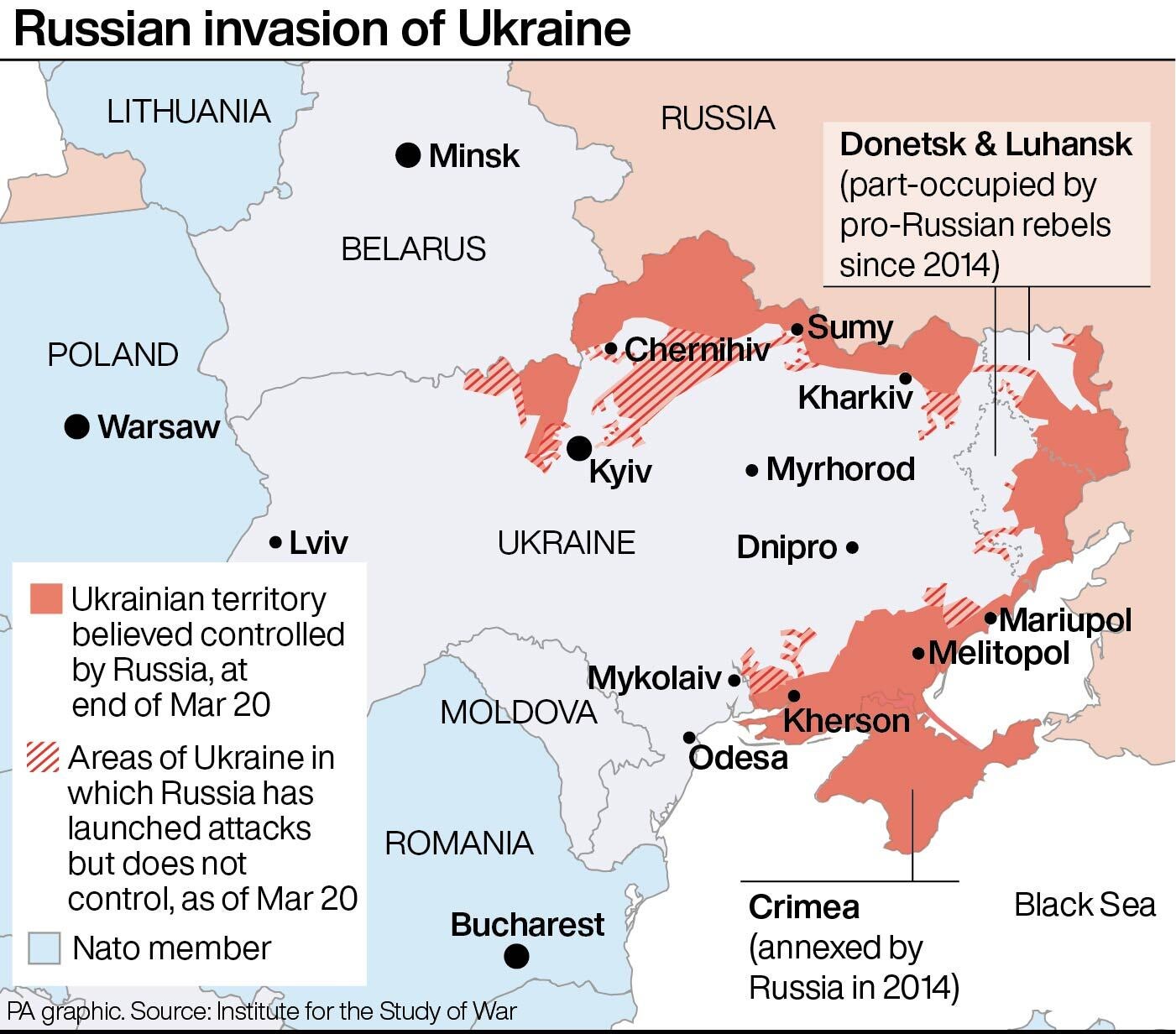A destroyed shopping mall in Kyiv lays bare Putin’s frustration at a stammering invasion
Kim Sengupta witnesses the destruction at a shopping centre in Kyiv pounded by Russia’s fiercest attack on the capital so far


Your support helps us to tell the story
From reproductive rights to climate change to Big Tech, The Independent is on the ground when the story is developing. Whether it's investigating the financials of Elon Musk's pro-Trump PAC or producing our latest documentary, 'The A Word', which shines a light on the American women fighting for reproductive rights, we know how important it is to parse out the facts from the messaging.
At such a critical moment in US history, we need reporters on the ground. Your donation allows us to keep sending journalists to speak to both sides of the story.
The Independent is trusted by Americans across the entire political spectrum. And unlike many other quality news outlets, we choose not to lock Americans out of our reporting and analysis with paywalls. We believe quality journalism should be available to everyone, paid for by those who can afford it.
Your support makes all the difference.The foreboding has been that Russian forces, frustrated at failing to take Kyiv, the main prize sought by Vladimir Putin, would start pulverising the city with heavy artillery.
The damage such weapons can do is shown graphically at Podilskyi.
The shelling of the district, on the outskirts of the Ukrainian capital, effectively demolished a 10-storey shopping mall, turned the car park into a crater, started a fire that lasted for hours, and shattered windows in residential blocks 500 yards away.
Eight people were killed and dozens are said to be missing under the rubble at the Retroville mall. The emergency services said it was the biggest scene of civilian damage in the Ukrainian capital in the 26 days of the war, and that further such attacks on populated areas would cause carnage.
The blast came after a relative lull in hostilities for Kyiv over the weekend. The shelling was followed by missile strikes, which hit homes as well as public buildings. A 40-mile-long Russian military convoy, which had set off from across the border in Belarus, had split and begun to take up vantage points around the capital in recent days. Western officials said that it appeared, belatedly, to have begun the first part of its mission.
The Ukrainians claimed that both commercial and residential buildings had been hit. The Kremlin maintained that the shopping complex hid an underground munitions storage facility, making it a legitimate target.
The bombardment was accompanied by attempts by Russian troops to thrust into the city from the north, around the towns of Hostomel, which has an airfield of strategic importance, and Irpin, where Ukrainian forces had blown up a bridge and blocked a route onto a road 25 minutes by car from the city centre.
Both the attacks were repulsed by Ukrainian troops, but the Russians have been receiving reinforcements throughout the last week along the northern front, as well as moving up from the south. Further offensives, say Ukrainian commanders, are likely to take place in the coming nights and days.
Kyiv’s mayor, the former world heavyweight boxing champion Vitali Klitschko, announced a 35-hour curfew starting from 8pm on Monday – the third ordered since the invasion began. The reason given, as on the previous two occasions, was to hunt down saboteurs supposedly working for Moscow, who are likely to become active ahead of a Russian assault.

Residents two sets of roads away from the mall heard the explosion before the glass in their windows went flying. “This was the biggest explosion I’ve heard since the war began,” said Irina Pateruk, “then there were flames which just kept burning. It is astonishing to see such a big building get damaged so badly.”
Ms Pateruk, who works for a company selling beauty products, was not surprised that such a strike had taken place near her home. “The whole city is under attack, the whole city is a target for them. There was a gym at the shopping mall which I used, but of course that’s gone now. But the main thing is that even more people were not killed,” she said.
Around 90 per cent of the people from the area have left their homes and moved out of the city since the conflict started. Ms Pateruk, however, was determined to stay. “I have my 14-year-old daughter here; this is our home, our city. Why should we move and become refugees?” she asked.
Husband and wife Alex and Tanya Cherkasov are also among the residents in the blocks who have decided to stay. “We are both volunteers defending the city, so obviously our job is to be here,” said Mr Cherkasov. “Also, the Russians are attacking everywhere, so shelling like this can take place anywhere.”
Viktor Nimchenko, who had opened a temporary coffee stall for local people, is also of the view that the “front line is everywhere”. He wanted to stress that “Irpin is not far away. I think the Russians are using big guns to scare people to move out of this area. They want a clear area to come through.”
At the constantly active front line on the northern edge of the city, a volunteer battalion was among the forces that had come under intense Russian military pressure. Evidence of prolonged firefights lay in burnt out vehicles, smashed roadblocks and bullet casings on the road.
“They tried to get past this area last week, and then they stopped for a few days,” said Captain Nicolai, who did not want his family name published. “There was a halt after that, but they really tried to push through last night, much more than before. Normally they would try and then fall back. This time they seemed more determined, but we drove them back. We’ll continue to drive them back.”

Join our commenting forum
Join thought-provoking conversations, follow other Independent readers and see their replies
Comments